Summary
Font
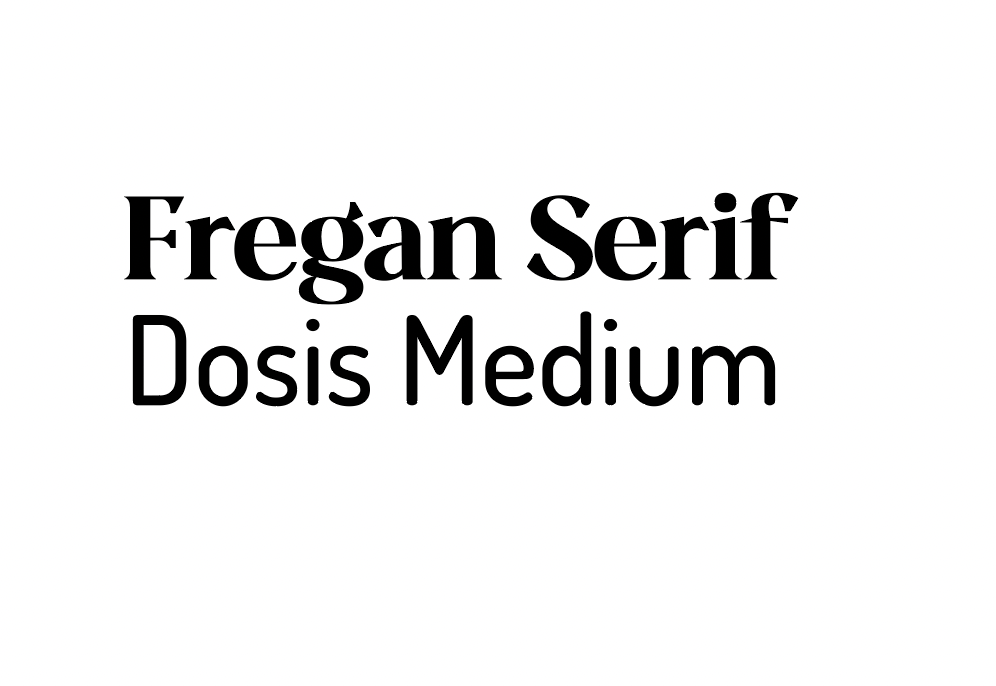
Color Palette
Pie Charts
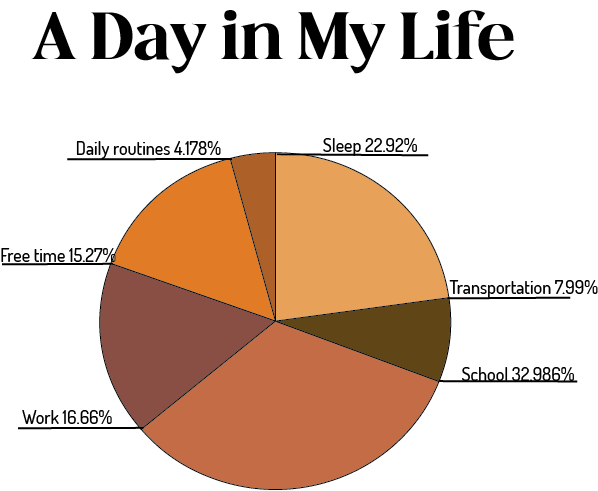
Script
Audio Editing
Storyboard
Video Editing
The Documentary
What I learned
https://drive.google.com/file/d/1gnGHPdDsA52PO5yBLtOv27koG0E9mJQY/view?usp=sharing


https://drive.google.com/file/d/1gnGHPdDsA52PO5yBLtOv27koG0E9mJQY/view?usp=sharing
| Session Number | 6 |
| Week Number | 2 |
| Total Estimated Hours Contributed this Week: | 6 |
| What was your overall goal for this week? | 5 |
| 6Date | Task Description | Time Spent | Was this a Best Practice? |
| 5/29 | NO CLASS | NA | NA |
| 5/30 | Today we started our Day in my life documentary and began work on our color pallets and fonts | 50 minutes | yes, because working with adobe creative tools is an important tool for the real world of work |
| 5/31 | Today we continued working on our Day in My Life film, today focusing on choosing fonts and importing them properly | 30 minutes | yes, because working with Adobe and Mac software is an important tool for the world of work |
| 6/1 | Today we continued working on our Day in My Life film, today focusing on logging our data and constructing our pie charts | 50 minutes | Using tools like illustrator is an important way to practice using tools for the world of work. |
| 6/2 | Today we continued working on our Day in My Life film, today focusing on logging our data and constructing our pie charts | 50 minutes | Yes, because working with adobe products is a good way to practice using tools common in the film industry. |
Are there any other comments you would like to include? If so, please enter them here:
During post-production, my role was relegated to fulfilling tasks that are not normally reserved for the cinematographer. I took charge of organizing sound files and providing advisement to the director in a way that more closely resembled the way in which a director might advise the editor. Overall I mostly sought to ensure that all clips were available in the highest quality possible so that they could be cleanly compressed if needed without suffering any distortion.
Due to the nature of our two-person team, there was no director to directly collaborate with and thus the responsibilities of the director were shared among the team.


| Session Number | 5 |
| Week Number | 3 |
| Total Estimated Hours Contributed this Week: | 6 |
| What was your overall goal for this week? | 5 |
| Date | Task Description | Time Spent | Was this a Best Practice? |
| 5/22 | NO CLASS | NA | NA |
| 5/23 | Today we worked on completing our post-production work as well as filling out our sprint retrospective. | 50 minutes | yes, because thinking retrospectively and reflecting requires the employment of critical thinking. |
| 5/24 | Today we worked on finishing up our post-production blog posts | 40 minutes | yes, because filling out said blog post further employs the best practice of critical thinking. |
| 5/25 | 50 minutes | yes | |
| 5/26 | NA | NA |
Are there any other comments you would like to include? If so, please enter them here:
| Session Number | 5 |
| Week Number | 5 |
| Total Estimated Hours Contributed this Week: | 6 |
| What was your overall goal for this week? | 5 |
| Date | Task Description | Time Spent | Was this a Best Practice? |
| 5/15 | NA (state testing schedule) | NA | NA |
| 5/16 | Today I worked on finishing my post-production blog post as well as the film post-mortem sheet. | 50 minutes | Yes, because it involved critical thinking skills necessary in order to adequately reflect upon my experience. |
| 5/17 | Today I worked on filling out my post-Morten sheet as well as reviewing the Schoology resources for possible sources for my post-production post. | 50 minutes | Yes, because the activity involved reflective critical thinking skills |
| 5/18 | Today I watched the presentations for my fellow peers and their films, as well as the feedback given by industry professionals. | 50 minutes | yes, because it epitomized the collaborative way of working |
| 5/19 | Today I continued to watch the presentations of my peers, and presented my own film for feedback from professionals. 50 minutes yes because i focused on communicating the intentions behind my work, which falls directly under the ways of working. |
Throughout the production phase of this film, I have put a great deal of time and effort into my specific role as
Push-in Shot:
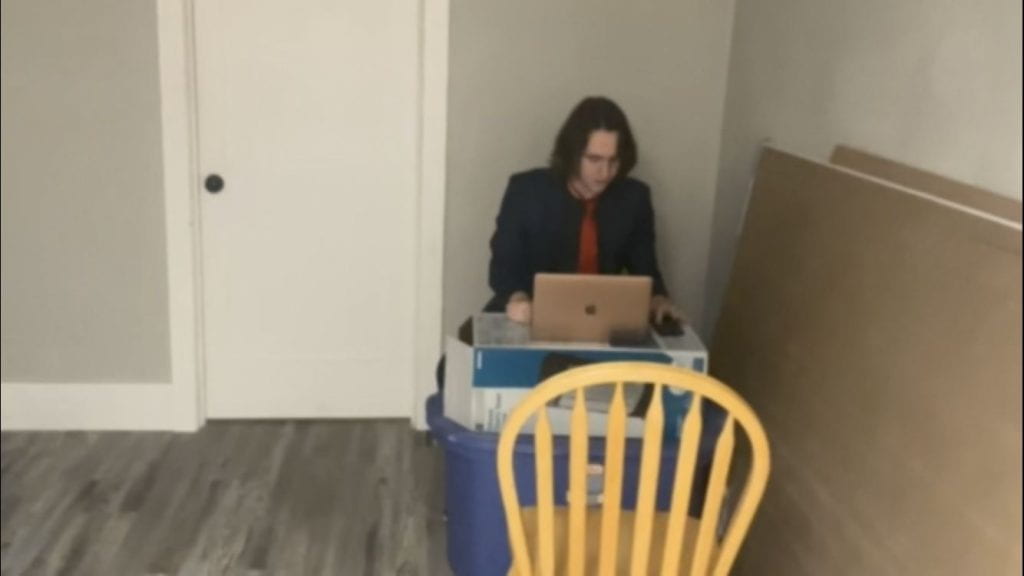
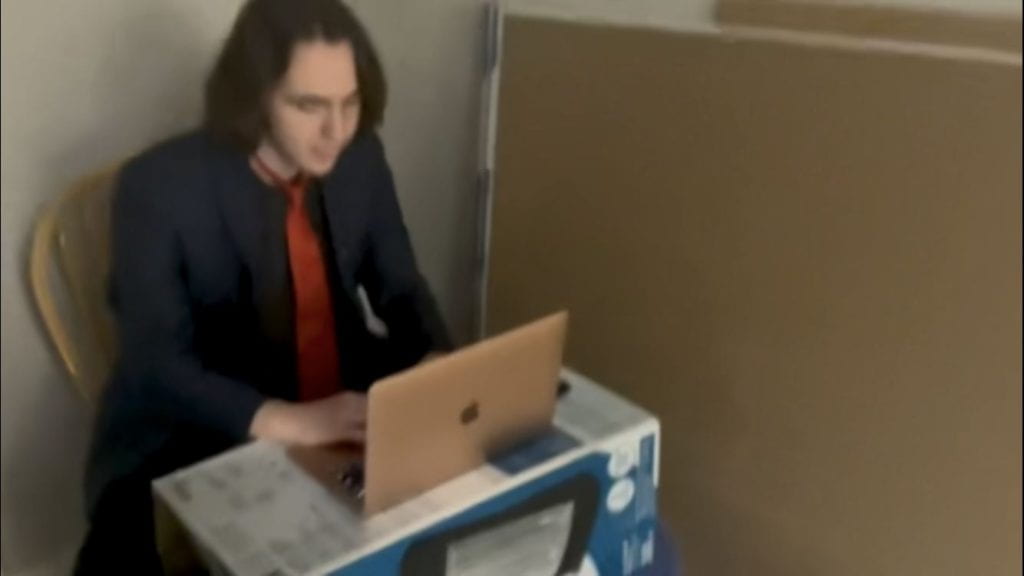
Varied Camera Angles

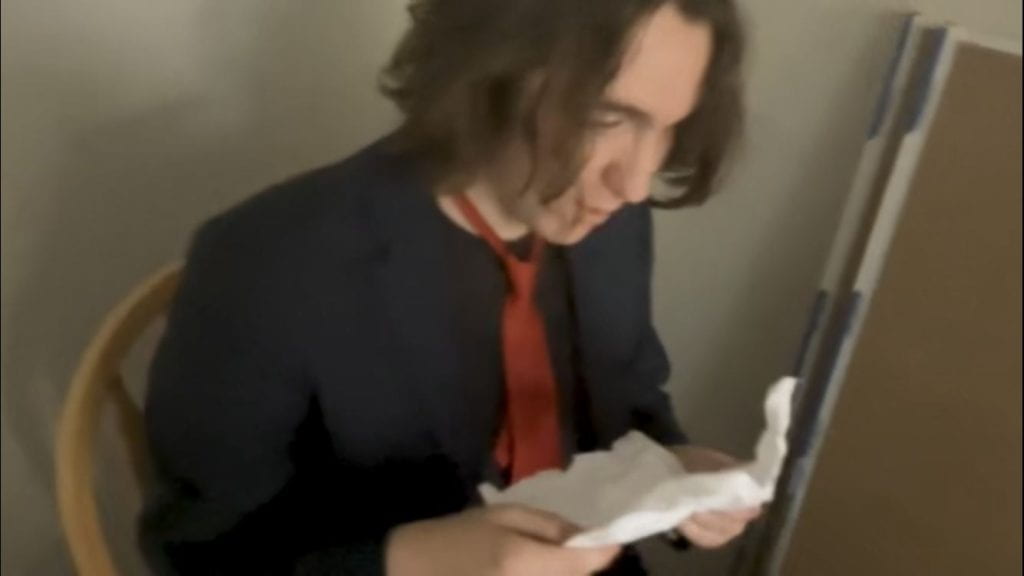
Throughout the film, camera angle and placement is used to signify the presence of a power dynamic between the boss and the applicant. In order to convey this, the camera angle was adjusted during the climax in order to portray the boss in a position of inherent visual power as the subject of the shot.
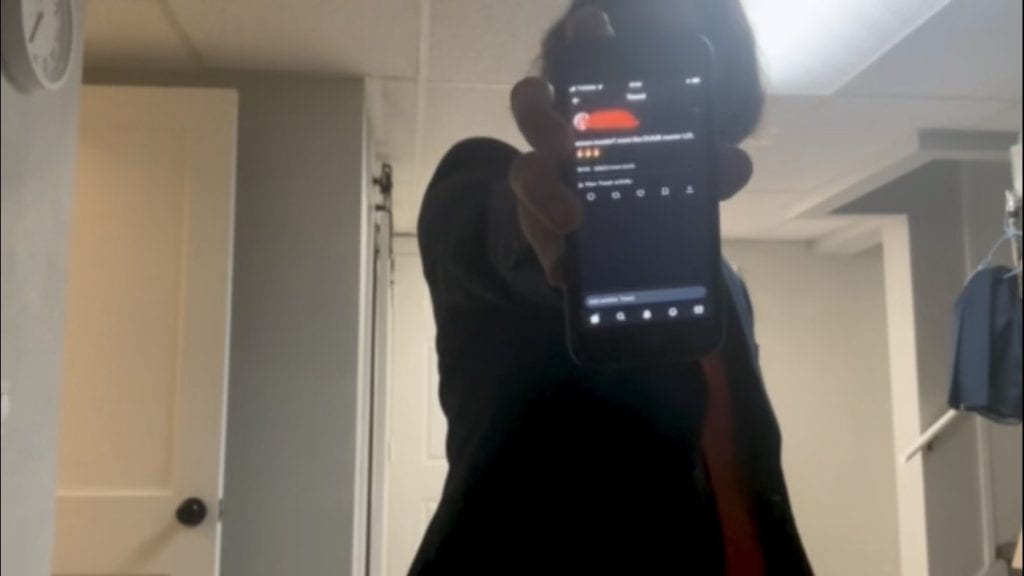
In the figure above, we can see that the camera is placed below eye level, facing slightly upwards toward the subject. This, combined with the bright lighting from behind conveys a sinister tone to the audience, communicating both the present power dynamic as well as the anger felt by the boss.
During the production phase of the film, we decided to shoot in the very early evening in order to capitalize on the ambient lighting outdoors. The soft light paints the subject in a very positive manner, perfect for setting the opening tone of the film as pictured below.
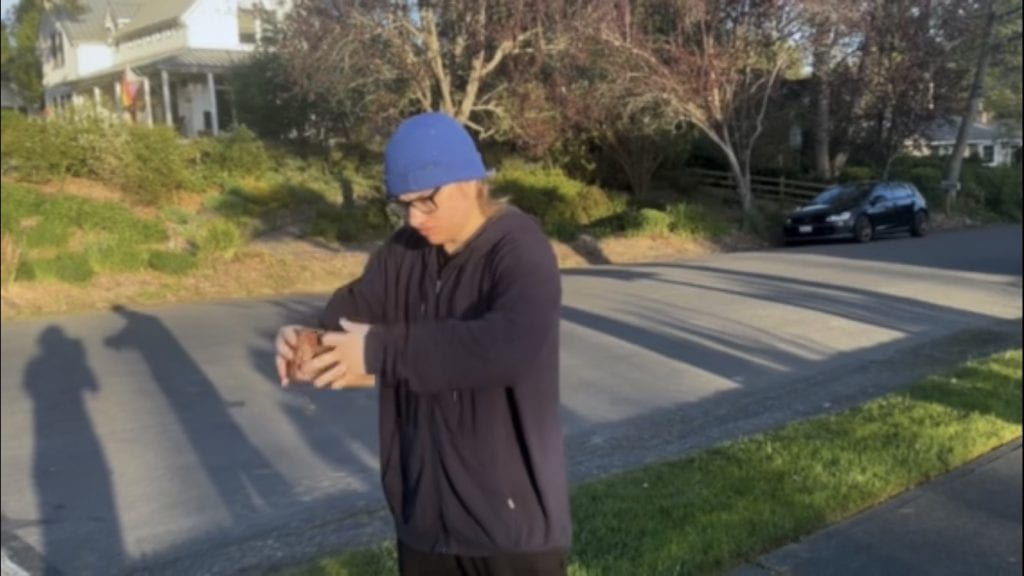
In addition, the natural lighting present at this time of day perfectly allows for the character to be framed in such a way as to emphasize their face and emotions. The light allows for the applicant’s turmoil at the prospect of being broke to be clearly illuminated on the screen.

As our production time was cut significantly shorter due to IB testing, my editor and I collaborated after school on how we should make sure that important rules of film were followed and not ignored in the rush to finish filming. We also discussed how best to maximize the use of footage we had rather than having to re-shoot any scenes, as there simply was not enough time for revision.
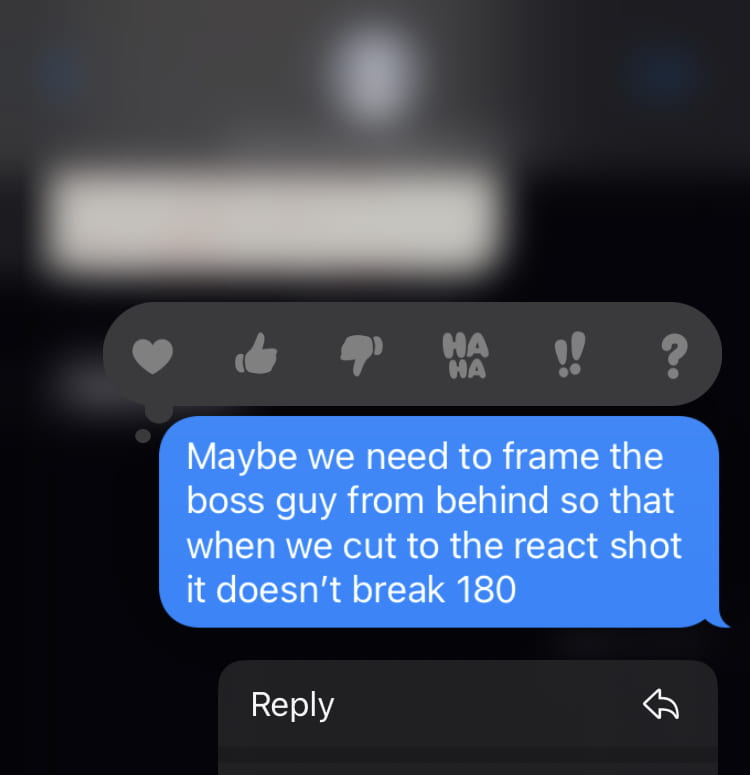
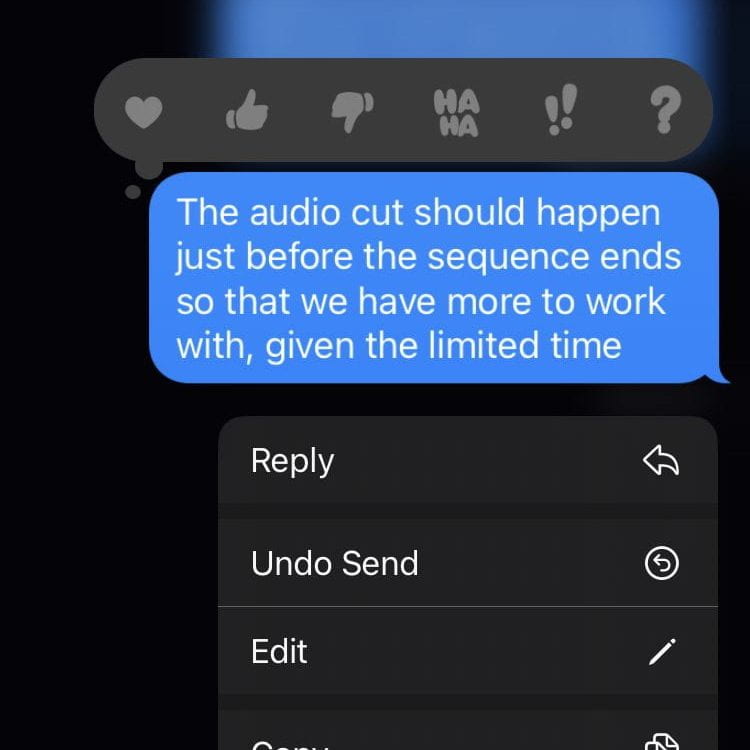

During the filming phase of production, there were certain scenes of the climactic exchange between the boss and the applicant that were not used in the original film. The shot pictured to the left is one such example, wherein the subject was not facing a direction that was consistent with the rest of the dialogue sequence and was subsequently cut.
To begin, it is important to preface that although the original creative intentions were met, the restrictive nature of the time allotted in comparison to our peers severely limited the range of film we were able to shoot. However, in terms of cinematography, I believe that the strongest point of the film was the different instances of camera movement. In the initial scene, the camera pans up from the ground, officially introducing the applicant as the main character and allowing a glimpse into their emotional state by pausing at eye level. In terms of camera positioning, the limitation of having only two people to act and film meant that shots with both characters in the scene presented a significant challenge. While I lament the inability to have full control of the camera placement, I believe that not being able to see that character’s heads in certain scenes ended up creating an unintended (yet welcome) creative effect. It allowed the audience to focus more on the body language of the characters and the deliberate work that went into characterizing them outside of the dialogue. The outside lighting lent itself greatly to the introduction of the film, setting an effective tone. Yet, the indoor lighting of the set was very limited in its effect and effectively washed out characters in certain scenes (only being useful in the heavy shadows that it cast).
While brainstorming the film, it became apparent that our team wanted the confrontation between the two characters to be the visual climax of the story. We wanted to ensure that a clear dynamic was established both with the dialogue as well as how the characters were framed during the confrontation. Immediately, the cinematography of David Tattersall in “Star Wars: Revenge of the Sith” came to mind. During the climax of the film, we see two opposing characters exchange blows in a choreographed fight that ends in a very famous scene showcasing how the power dynamic has reversed throughout the course of the scene.
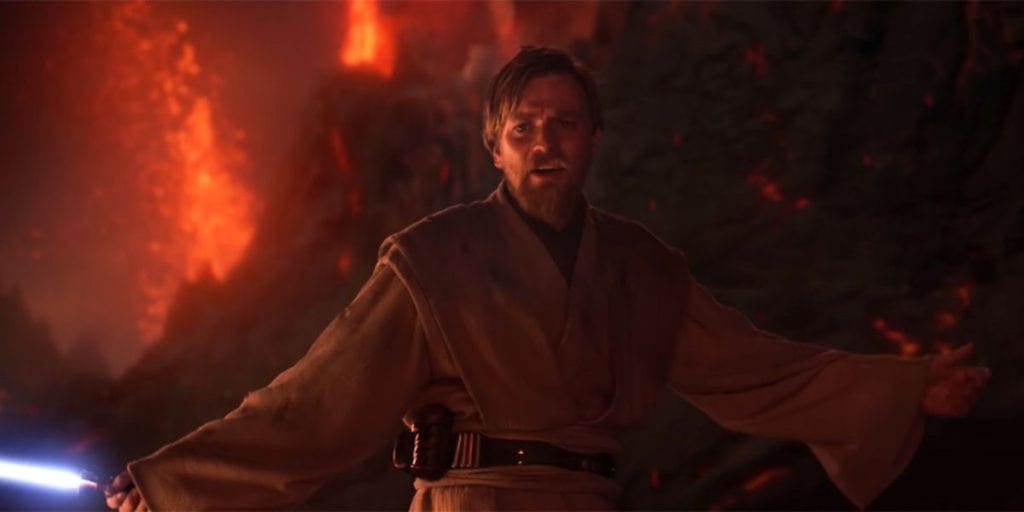
The clear establishment of this new power dynamic comes primarily from the cinematography of the scene, wherein the figure pictured above is shot from a lower angle, thus effectively conveying the impact of the scene without any dialogue. We attempted to replicate this effect in our film and found that the vertical positioning of the camera can drastically affect the way in which characters and scenes are perceived by the audience.
Throughout this production, I learned an incredible amount about how to prioritize my intentions over the overall final quality of the film itself. Instead of worrying about perfect set design and opportune locations, focusing on my specific intentions allowed me to create a product that showcases what I have learned throughout my career as a filmmaker. The most important thing I can do as a member of a film production team is to make sure that my individual efforts and intentions are present in the final product. After finishing production I can say that although this film may not be my strongest in terms of quality, it is still one of the best showcases of my technical skills.
| Session Number: | 5 |
| Week Number: | 7 |
| Total Estimated Hours Contributed this Week: | 5 |
| What is/was your overall goal for this week? | finish the production section of the blog post |
| Date | Task Description | Time Spent | Was / Were your choices and work Best Practices? Why? |
| 5/1 | Today I finished up the pre-production section of my blog post. | 50 minutes | Today I focused on utilizing software tools that are standard in the world of work, therefore I practiced my proficiency with professional work tools. |
| 5/2 | Today I showed up a few minutes late, but I made sure to get working on setting up shoot locations for our film. | 45 minutes | I focused today on developing my work ethic (which is a career skill) by making sure that I stayed on task and got as much done as possible today. |
| Session Number | 5 |
| Week Number | 3 |
| Total Estimated Hours Contributed this Week: | 6 |
| What was your overall goal for this week? | 5 |
| Date | Task Description | Time Spent | Was this a Best Practice? |
| 4/24 | Today I consulted the industry standard cinematic story elements textbook in order to determine the specific kinds of elements that I want to practice in this production. I decided on three different elements in order to further immerse myself in the role of cinematographer. | 50 minutes | I was consulting resources that prepared me for the world of work |
| 4/25 | Today I worked on the pre-production section of my blog post in order to test certain shots and lighting configurations | 50 minutes | I was communicating my thoughts and intentions |
| 4/26 | Today I continued to work on the pre-production section of my blog posts. Due to the upcoming weeks of intensive testing, I will need to take extraneous measures in order to stay on track to complete this film production. | 50 minutes | I continued to communicate my thoughts and intentions regarding this film |
| 4/27 | Today my editor and I worked on editing our storyboard and adding clear notation so as to be very clear about our intentions from the get-go. We decided to go with a digitally illustrated storyboard for ease of exporting as well as the many tools that are available. | 50 minutes | I collaborated with my editor in order to draft the storyboard |
| 4/28 | Today I finalized the storyboard and decided on locations with my teammate. In addition, we drew maps showing the various locations we plan to film as well as our |
Are there any other comments you would like to include? If so, please enter them here:
The period of Pre-Production is perhaps the most intensive for the role of a cinematographer. While production requires strict adherence to a predetermined shot list, pre-production requires a significant amount of planning and forethought as well as heavy collaboration within the production team. For this production, my pre-production work will be focused on determining how distance can affect the mood and tone of a shot/scene. I also want to practice working with focus and shifting focus within a single shot in order to shift perspective.
Element 74: Push in – Pull out

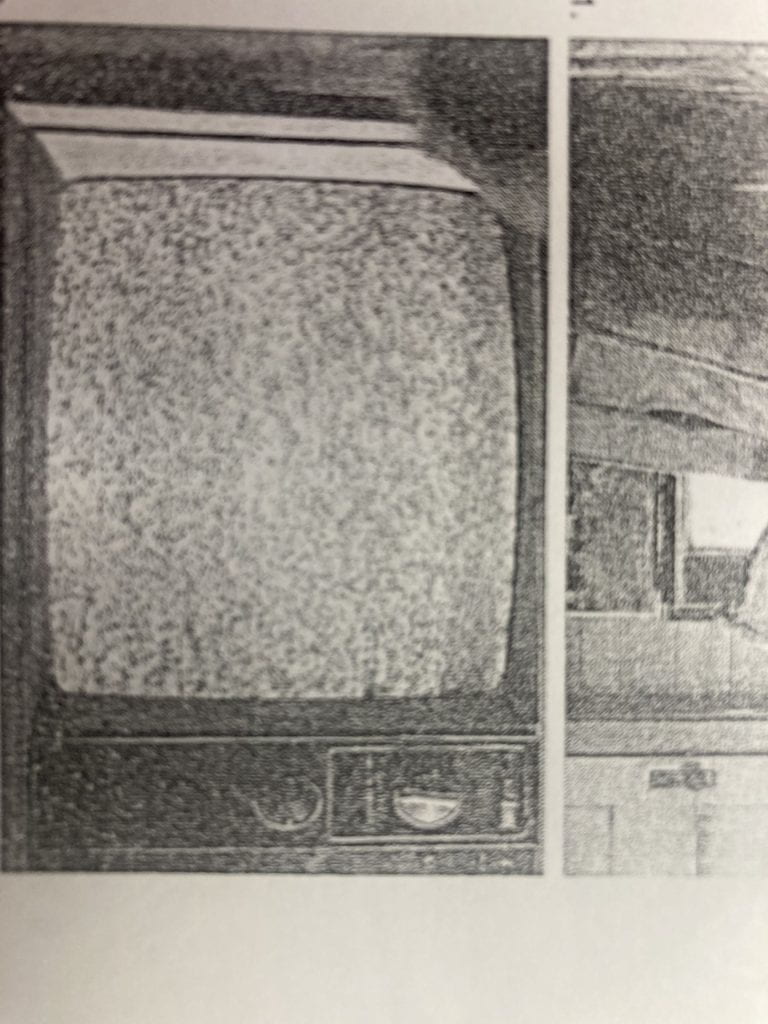
Element 59: Extreme Close-Up
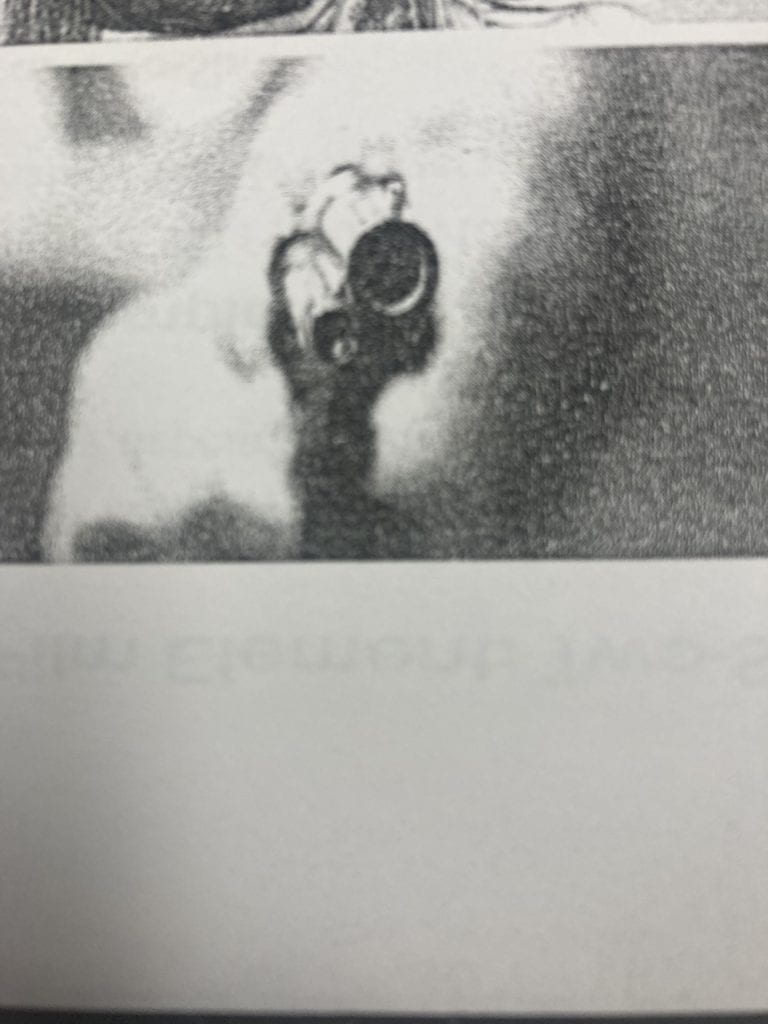
Film Element 67: Static Shot

Difference in focal length:

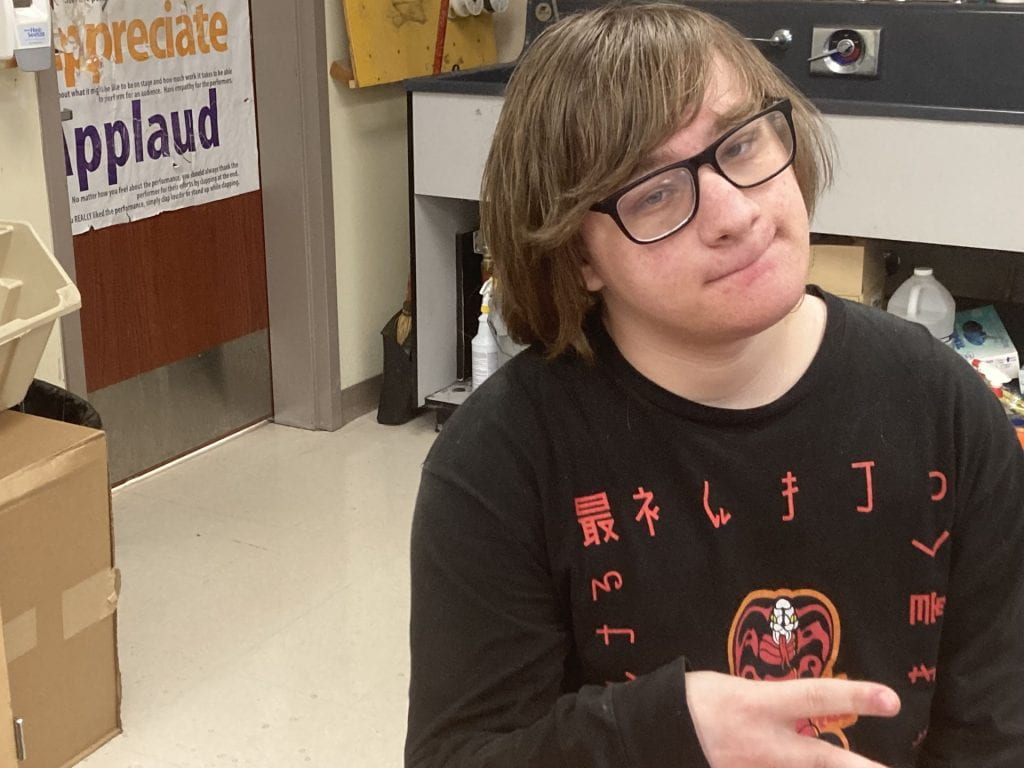
Difference in camera placements:

I conducted a lighting test in the green room in order to determine how exactly my light source would affect the subject I was filming. I determined that filming in a dark location has the benefit of being able to heavily control the lighting environment. However, given my resources as a student, I think that experimenting with both natural light and controlled light will yield a more diverse lightscape for my current film production.
-Camera 1
-Alternate Camera
-Tripod
-Light Block
-Audio Deck
-XLR Cord
-Boom Mic
-USB transfer cables (camera and audio deck)
NA (2-person film team)
-Acquire cameras
-Test lens focus and battery levels
-Acquire tripod/stabilizing equipment
-Move to the shooting location
-Set up tripod/s at the predetermined angles and heights
-Affix camera/s to tripods and set brightness levels
-Roll camera


I learned from this production that I still have a lot to learn (obviously) about how to properly fulfill the role of a cinematographer, as well as how to properly collaborate with my film team. In previous productions, I was unaware of the heavy amount of work needed during pre-production. This time around, I was able to practice my skills of setting intentions and applying them to my production. As a cinematographer, I developed many of my 21st-century skills, most particularly problem-solving. This is because our film team was limited to two members, so I had to juggle my responsibilities as a cinematographer while also fulfilling the jobs of other roles.